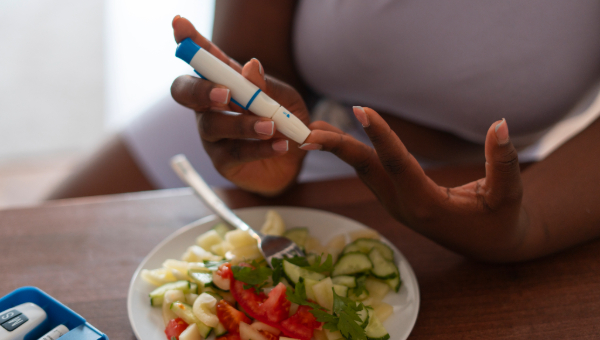Understanding Your Prescription: A Guide to Labels
Mar 06, 2025
Understanding Your Prescription: A Guide to Labels
When you receive a prescription from your doctor, it may come with a confusing array of terms, numbers, and instructions. While your healthcare provider has your best interests at heart, understanding the details on your prescription label can be a bit overwhelming, especially when you're trying to follow the correct dosage or ensure you're using the medication properly. This guide will break down the common elements found on your prescription label to help you better understand what you are taking, how to take it, and why it matters.
1. The Patient Information
At the top of the label, you will typically find your name, address, and sometimes your date of birth. This is to ensure that the medication is being dispensed to the correct person. It's important to double-check that all information is correct to avoid any mix-ups.
2. Medication Name
The medication's name appears prominently on the prescription label. There may be two names listed: the generic name and the brand name. The generic name is the chemical name of the drug, while the brand name is the name the manufacturer has given it. If you're unsure which one you're getting, you can ask your pharmacist to clarify. Generic medications are often less expensive but are just as effective as their brand-name counterparts.
3. Dosage and Strength
This part of the prescription label indicates the strength of the medication and how much you should take at a time. Medications can come in various strengths (e.g., 200mg, 500mg, etc.), and it's crucial to take the exact dosage prescribed. Make sure to follow your healthcare provider’s instructions on dosage and timing to avoid any unwanted side effects or ineffective treatment.
4. Directions for Use
The directions provide a step-by-step guide on how to take the medication properly. This could include when to take it (e.g. before meals, with food, at bedtime), how often (e.g., twice a day, every four hours), and any special instructions (e.g., shake well before use, avoid alcohol, take with plenty of water).
It’s essential to follow these directions carefully to ensure the medication works as intended and to minimize the risk of side effects or complications.
5. Quantity
The quantity refers to how much of the medication you are being prescribed and should match the number of pills, bottles, or packages in your possession. This is often displayed at the bottom of the label and may also note how many refills you have available. Make sure to track the quantity so you don’t run out of medication before your next prescription. If your medication is running low, contact your doctor or pharmacy for a refill before it’s too late.
6. Pharmacy Information
The pharmacy name, address and contact number should be listed on the label. If you have any questions or concerns about your medication, this is the place to look for assistance. Keep the information safe in case you need to reach out with any questions.
7. Prescriber Information
The prescribing doctor’s name may also be listed, so you know who wrote the prescription. If you need to contact your healthcare provider for follow-up questions or adjustments to your treatment plan, this information will be helpful.
8. Expiration Date
Every medication has an expiration date, which indicates the date until which the medication is guaranteed to be effective and safe to use. After this date, the effectiveness of the medication may decrease, and in some cases, it could become harmful. Be sure to check this date before using any medication. If it’s expired, dispose of it properly and get a new prescription from your doctor.
9. Warnings and Precautions
Some prescription labels will contain warnings about potential side effects, drug interactions, or conditions that require special attention. These might include advice like "Do not take with alcohol" or "May cause drowsiness." Always read these warnings carefully and discuss any concerns with your doctor or pharmacist.
10. Storage Instructions
Proper storage of medications is essential for maintaining their effectiveness. Some medications require refrigeration, while others need to be kept in a cool, dry place. The label will tell you where to store your medication.
11. Drug Interaction Information
Some medications can interact with other drugs, food or beverages. The label may include a brief warning if there are any known interactions. For example, you might be advised to avoid grapefruit juice or to let your doctor know if you're taking another medication.
Conclusion
Understanding your prescription label is crucial for managing your health and ensuring your treatment is as effective as possible. Always read the label thoroughly and follow the instructions carefully. If you ever have any doubts about your medication, don’t hesitate to contact your pharmacist or healthcare provider for clarification. By becoming familiar with the components of your prescription label, you will be better equipped to take control of your health and make informed decisions about your treatment.
Stay safe and healthy!
Recent Post

Top Causes of Hypertension + Management Tips

Living with Diabetes: Daily Habits for Better Blood Sugar Control

Tips for Healthy Aging: Embrace Wellness at Every Stage of Life

Did You Know? Sleep Deprivation Has a Serious Effect on Your Brain

Prioritizing Mental Health: A Key to Overall Well-Being

Did You Know? Your Pillowcase Could Be Causing Acne

Fitness in the Modern Age: Overcoming Stereotypes and Embracing Health

Mindful Eating: Healthy Habits for Weight Management

Making Health Checkups a Priority in 2025: A New Year’s Resolution for Better Health

Staying Healthy and Balanced During the Festive Season

